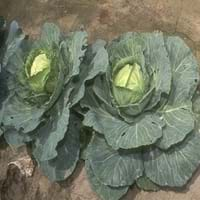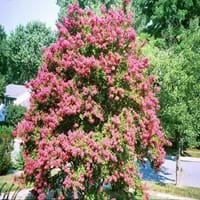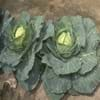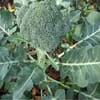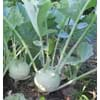Life Span
Annual
Perennial
Origin
Southern Europe, Western Europe, Mediterranean
Hybrid origin
Types
11
Lagerstroemia villosa, Lagerstroemia subcostata, Lagerstroemia microcarpa
Number of Varieties
Not Available
Habitat
Swamps
Coastal Regions, Open Forest, Swamps
USDA Hardiness Zone
Not Available
6-10
Sunset Zone
A1, A2, A3, H1, H2, 1a, 1b, 2a, 2b, 3a, 3b, 4, 5, 6, 7, 8, 9, 10, 11, 12, 13, 14, 15, 16, 17, 18, 19, 20, 21, 22, 23, 24
H1, H2, 7, 8, 9, 10, 12, 13, 14, 18, 19, 20, 21
Habit
Rosette/Stemless
Upright/Erect
Flower Color Modifier
Bicolor
Bicolor
Fruit Color
Not Available
Green, Brown
Leaf Color in Spring
Green
Dark Green, Burgundy
Leaf Color in Summer
Light Green
Dark Green, Burgundy
Leaf Color in Fall
Light Green
Burgundy, Dark Red
Leaf Color in Winter
Light Green
Not Available
Leaf Shape
Heart-shaped
Cylindrical
Plant Season
Spring, Summer, Fall, Winter
Spring, Summer, Fall, Winter
Sunlight
Full Sun, Partial Sun
Full Sun, Partial Sun
Type of Soil
Loam, Sand
Clay, Loam
The pH of Soil
Acidic, Neutral
Acidic, Neutral
Soil Drainage
Well drained
Well drained
Bloom Time
Spring, Late Spring, Early Summer
Summer, Late Summer
Tolerances
Drought
Drought, Soil Compaction
Where to Plant?
Container, Ground, Pot
Ground
How to Plant?
Seedlings, Transplanting
From bulbs, Seedlings, Seperation, Stem Planting
Plant Maintenance
Medium
Medium
Watering Requirements
Keep the ground moist but not water-logged, Never Over-water, Requires regular watering
Needs watering once a week, Requires watering in the growing season
In Summer
Lots of watering
Lots of watering
In Spring
Moderate
Moderate
In Winter
Average Water
Average Water
Soil pH
Acidic, Neutral
Acidic, Neutral
Soil Type
Loam, Sand
Clay, Loam
Soil Drainage Capacity
Well drained
Well drained
Sun Exposure
Full Sun, Partial Sun
Full Sun, Partial Sun
Pruning
Remove dead leaves
Prune if you want to improve plant shape, Prune to stimulate growth, Remove damaged leaves, Remove dead branches, Remove dead leaves
Fertilizers
All-Purpose Liquid Fertilizer
fertilize every 2-3 weeks while growing, fertilize in growing season, Requires high amount of nitrogen
Pests and Diseases
Red blotch
Beetles, Insects, Powdery mildew, Red blotch
Plant Tolerance
Drought
Drought
Flower Petal Number
Single
Single
Foliage Texture
Bold
Medium
Foliage Sheen
Matte
Glossy
Attracts
Beetles, Moths
Birds
Allergy
Food Allergy
allergic reaction, Asthma
Aesthetic Uses
Not Used For Aesthetic Purpose
Beautification, Cottage Garden, Landscape Designing, Showy Purposes
Beauty Benefits
Not Available
Not Available
Environmental Uses
Air purification
Air purification, Food for birds, Food for insects, Nesting sites for birds, Prevent Soil Erosion, Shadow Tree
Medicinal Uses
Arthritis, Asthma, Eczema, Eye Problems, Headache, Heart problems, Jaundice, Muscle Pain, Skin Disorders, Stomach pain, Treatment of ulcers
No Medicinal Use
Part of Plant Used
Whole plant
Flowers, Stem, Tree trunks
Other Uses
Economic Purpose, Employed in herbal medicine
Decoration Purposes, Economic Purpose, Showy Purposes, Used as Ornamental plant, Used for woodware, Used in construction, Used in Furniture
Used As Indoor Plant
No
No
Used As Outdoor Plant
Yes
Yes
Garden Design
Bedding Plant, Container, Edible, Herb / Vegetable
Feature Plant, Mixed Border
Botanical Name
BRASSICA oleracea 'Arrowhead'( Capitata Group)
LAGERSTROEMIA 'Arapaho'
Common Name
Arrowhead Cabbage, Cabbage
Hybrid Crapemyrtle
In Hindi
गोभी
क्रेप मेहंदी
In German
Kohl
Crapemyrtle
In French
chou
Crapemyrtle
In Spanish
repollo
Crapemyrtle
In Greek
λάχανο
Crapemyrtle
In Portuguese
repolho
Crapemyrtle
In Polish
kapusta
Crapemyrtle
In Latin
brassica
Crapemyrtle
Phylum
Anthophyta
Spermatophyta
Class
Magnoliopsida
Magnoliopsida
Order
Brassicales
Myrtales
Family
Brassicaceae
Lythraceae
Genus
Caulanthus
Lagerstroemia
Clade
Angiosperms, Eudicots, Rosids
Angiosperms, Eudicots, Rosids
Tribe
Not Available
Lagerstroemieae
Subfamily
Not Available
Lagerstroemieae
Importance of Cabbage and Crapemyrtle
Want to have the most appropriate plant for your garden? You might want to know the importance of Cabbage and Crapemyrtle. Basically, these two plants vary in many aspects. Compare Cabbage and Crapemyrtle as they differ in many characteristics such as their life, care, benefits, facts, etc. Every gardener must at least have the slightest clue about the plants he wants to plant in his garden. Compare their benefits, which differ in many ways like facts and uses. The medicinal use of Cabbage is Arthritis, Asthma, Eczema, Eye Problems, Headache, Heart problems, Jaundice, Muscle Pain, Skin Disorders, Stomach pain and Treatment of ulcers whereas of Crapemyrtle is No Medicinal Use. Cabbage has beauty benefits as follows: Not Available while Crapemyrtle has beauty benefits as follows: Not Available.
Compare Facts of Cabbage vs Crapemyrtle
How to choose the best garden plant for your garden depending upon its facts? Here garden plant comparison will help you to solve this query. Compare the facts of Cabbage vs Crapemyrtle and know which one to choose. As garden plants have benefits and other uses, allergy is also a major drawback of plants for some people. Allergic reactions of Cabbage are Food Allergy whereas of Crapemyrtle have allergic reaction and Asthma respectively. Having a fruit bearing plant in your garden can be a plus point of your garden. Cabbage has no showy fruits and Crapemyrtle has no showy fruits. Also Cabbage is not flowering and Crapemyrtle is not flowering . You can compare Cabbage and Crapemyrtle facts and facts of other plants too.
